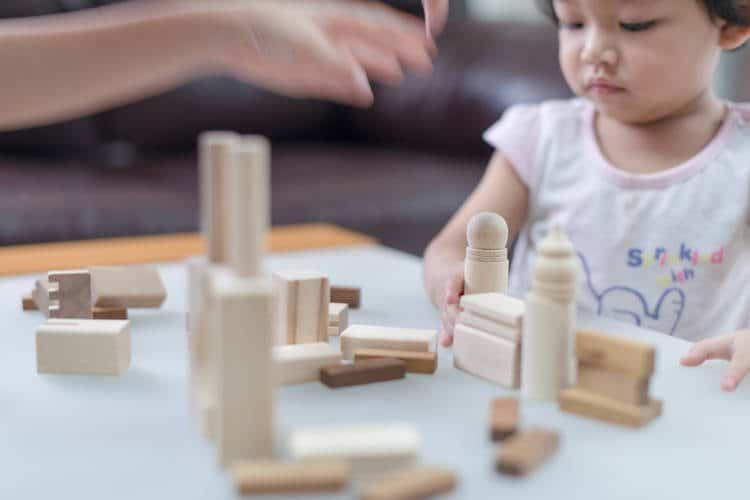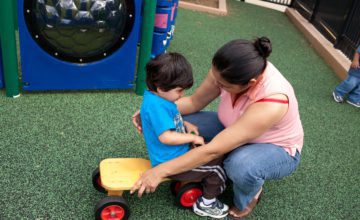Playtime is special. Not only is it fun, but it is critical to children’s development. Play is their “work” and their way of learning about the world around them. Through play, babies and toddlers try out new skills, explore their imagination and creativity, and learn about relationships with other people.
Any activity can be playful to young children, whether it’s rolling trucks back and forth or sorting socks. And any type of play can offer multiple opportunities to learn and practice new skills:
As a parent, you are your child’s very first and favorite playmate. From the very beginning of your child’s life, he is playing with you, whether he is watching your face as you feed him or listening to your voice as you sing to him during his diaper change. He is at work, learning and exploring.
So what can you do to make the most of your child’s playtime?
- Follow your child’s lead
- Provide an object, toy, or activity for your baby or toddler and then see what he does with it. It’s okay if it’s not the “right” way…let him show you a “new way.”
- Go slowly
- It’s great to show your child how a toy works, but try to hold off on “doing it for him” every time. You can begin something, such as stacking one block on another, and then encourage him to give it a try. Providing just enough help to keep frustration at bay motivates your child to learn new skills.
- Read your child’s signals
- Your little one may not be able to tell you using words when he’s had enough or when he’s frustrated. But he has other ways—like using his sounds, facial expressions, and gestures. Reading the signals that precede a tantrum help you know when to jump in or change to a new activity. Reading his signals can also tell you what activities your child prefers.
- Look at your play space
- Is the area child-friendly and child-safe? Is there too much noise or other distractions? Is the area safe to explore? Is this a good place for the activity you’ve chosen, such as running, throwing balls, or painting? Checking out your space beforehand can prevent a tantrum, an accident, or a broken lamp.
- Play it again, Sam
- While this desire to do things over and over again is not necessarily thrilling for moms and dads, it is for their young children. They are practicing in order to master a challenge. And when they can do it “All by myself!” they are rewarded with a powerful sense of their own competency—a confidence that they can are smart and successful beings. The more they practice and master new skills, the more likely they are to take on new challenges and the learning continues. So when you’re tempted to hide that toy that you don’t think you can stand playing with yet one more time, remember the essential role repetition plays in your child’s development.
- Adapt play activities to meet your child’s needs
- You may be a parent, relative, or caregiver of a child that has special needs. A physical, mental, or social disability can pose the occasional challenge to play time. Still, all children learn through play and any play activity can be adapted to meet a child’s unique needs. The guidelines below can help you think about how to make playtime enjoyable and appropriate to your child’s skills, preferences, and abilities:
- Think about the environment.
- How do variables like sound or light affect your child? What is the background noise like in your play area? Is there a television or radio on? Are there many other kids around? If your child seems distressed during playtime, and you’ve tried everything else, move to a quieter, less stimulating area to play.
- How does your child respond to new things?
- Some infants and toddlers, particularly if they have a special need, are easily over-stimulated, while others enjoy a lot of activity. Try starting playtime slowly, with one toy or object, and gradually add others. See what kind of reactions you get. Are there smiles when a stuffed bear is touched and hugged? Does your child seem startled by the loud noises coming from the toy fire engine?
- How does your child react to different textures, smells, and tastes?
- For example, some objects may be particularly enjoyable for your little one to touch and hold. Others may “feel funny” to them. Read your child’s signals and modify the play experience accordingly.
- Involve peers.
- It is important for a child with special needs, just as it is for a child who is typically developing, to establish relationships with peers. Arrange playdates or look for opportunities for your child to play with other children, such as at the park or during a library story hour. Having fun with peers is an important way that children learn social skills like sharing, conflict resolution, and empathy—and also help prepare children for the school setting later on.




